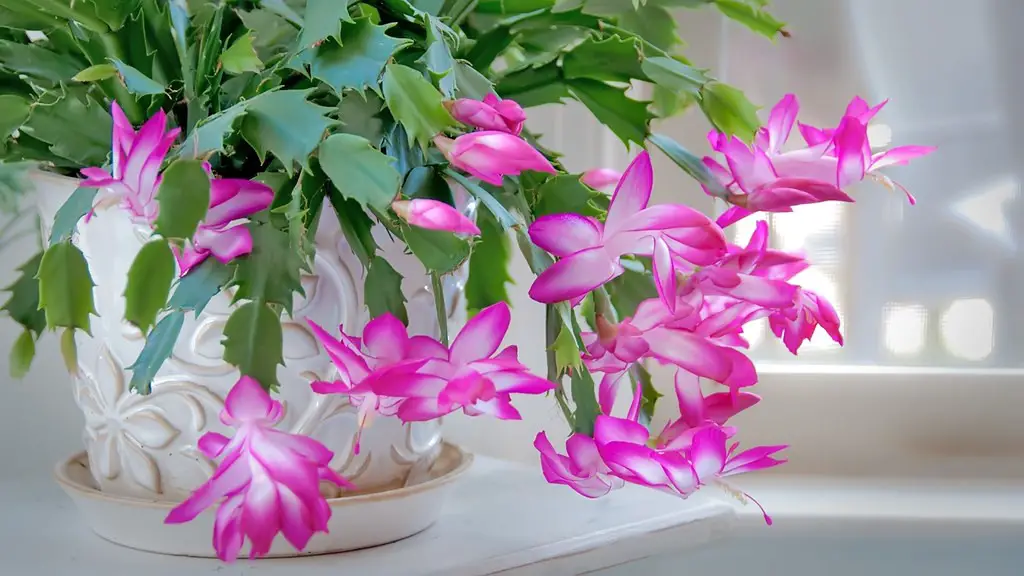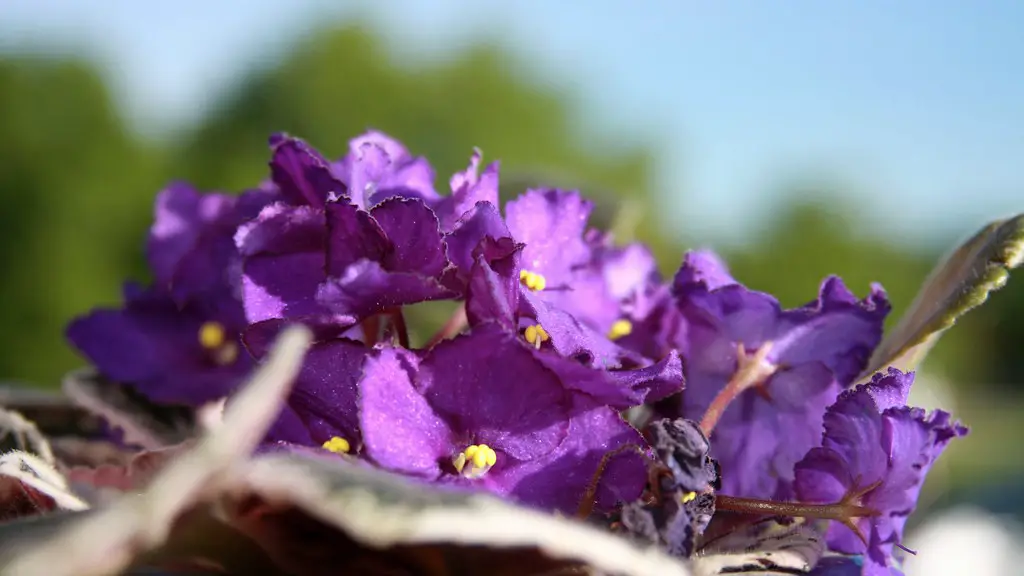African violets (Saintpaulia) are a charming option for growing indoors. These popular houseplants are relatively easy to grow and make cheerful blooming companions. African violets come in a range of colors, from white and pale pink to deep purple and lavender. Some varieties even have striking variegated leaves.
Yes, African violets can grow indoors.
How do you care for an African violet plant indoors?
African violets need indirect sunlight to thrive. Direct sunlight can burn the leaves, so it’s best to choose a north- or east- facing window for best results. Keep plants away from cold glass and rotate the pot once a week so all leaves receive light. Extend daylight by placing African violets under a grow light during winter months.
When you repot your African violets, be sure to use a pot that is only one size larger than the current pot. African violets need a well-draining potting mix that is high in organic matter. Be sure to water your African violets thoroughly after repotting.
How often do you water African violets indoors
A wicking system is a great way to make sure your African violets are never over watered. By only watering once a week and allowing the plant to completely dry between waterings, you can avoid the problems associated with too much water.
African violets are beautiful plants that thrive in humid environments. If you want your African violets to flourish, place them in a room with high humidity, such as a kitchen or bathroom. You can also help increase the humidity around your plants by placing a humidity tray underneath them. By providing the extra humidity they need, your African violets will grow quickly and flower for an extended period of time.
Should African violets be misted?
It is very important to not mist the foliage of African violets as this can cause permanent leaf spotting. It is best to use room temperature water when watering these plants so that the crown (the section of the plant at soil level) does not get saturated and cause crown rot.
It is important to keep the soil moist to dry, and allow the soil around the roots to dry out before watering to encourage blooming. Water from the bottom with room temperature water by placing the plastic grower’s pot in water, and allowing the plant to absorb the water (not more than 30 minutes).
Do African violets need bigger pots?
African violets do best when they are slightly pot-bound, so choose a pot that’s on the smaller side. Professional Tip: If you have a standard African violet plant, your starter pot should be about 3-4 inches in diameter.
African violets are stunning flowers that add a splash of color to any room. But getting them to bloom can be a challenge. Here are 8 ways to get your African violet to bloom again:
1. Let There Be Light
African violets need bright, indirect sunlight to thrive. If your plant is not getting enough light, it may stop blooming.
2. Turn Up the Humidity
African violets like humid conditions. If the air in your home is too dry, try placing your plant on a humidifier or pebble tray.
3. Replenish Essential Nutrients
African violets need to be fertilized regularly to bloom their best. Look for a fertilizer specially formulated for African violets.
4. Keep it Pleasant
African violets are sensitive to temperature changes. Keep your plant in a room that is cool and draft-free.
5. Choose the Right Soil
African violets need a well-draining, yet moisture-retentive soil. Look for a potting mix specially formulated for African violets.
6. Protect From Pests & Disease
African violets are susceptible to pests and diseases. Inspect
What do African violets symbolize
Africa violets are a beautiful flower that is most commonly associated with the symbol of devotion. Whether it is in a relationship, at work, or with a cause, the Africa violet let others know that you are committed and willing to stay the course. These flowers can also be a sign of faithfulness and are often given as gifts to express these sentiments.
If you’re not sure about the quality of your tap water, it’s best to err on the side of caution and use distilled or filtered water for your African violets. Chlorine, chloramines, and dissolved solids can all adversely affect these delicate plants, so it’s best to avoid them if possible.
Do African violets like coffee grounds?
Coffee grounds are slightly acidic and contain nitrogen, which helps plants grow healthy foliage. Occasionally sprinkling used coffee grounds on top of your African violet potting soil can be good for the plant.
African violets prefer slightly acidic conditions, which can be created by using peat moss in the potting soil. Peat moss is used to lower the pH in African violet potting soil and make it more acidic. This allows the plant to more efficiently absorb nutrients.
What is the secret to growing African violets
If you want your plants to have the best color and blooms, grow them in bright, indirect light. A plant stand three feet away from a west- or south-facing window is an ideal location. Plants will still grow when situated right beside north- or east-facing windows, but leaves will be thin and spindly, and plants less likely to bloom.
Mealybugs can be a problem for African violets. They can include the citrus mealybug (Planococcus citri) and the Comstock mealybug (Pseudococcus comstocki). Mealybugs are approximately ¼ inch in length. They have soft bodies and are covered with a white waxy material that makes them look cottony.
Do African violets prefer plastic pots?
African violets are one of the most popular houseplants, and for good reason! They are relatively easy to care for and come in a wide range of colors and varieties. When it comes to potting African violets, the best material to use is plastic.
Plastic pots are lightweight and come in a variety of sizes and colors to match your decor. They are also inexpensive and long-lasting. Most importantly, plastic pots help to keep the soil moist, which is crucial for African violets. Due to their shallow root system, African violets are susceptible to drying out. By using a plastic pot, you can help to prevent this from happening.
Over-fertilizing your African Violet can actually do more harm than good, so it’s important to be mindful of how often you fertilize the plant. During the spring and summer, you should fertilize your African Violet every 14 days. However, during the fall and winter, it’s best to forgo fertilization altogether to prevent any problems.
Conclusion
Yes, African violets can be grown indoors. They prefer warm, humid conditions and bright, indirect sunlight. African violets need to be watered regularly, but be sure not to overwater them. Allow the soil to dry out between watering. fertilize African violets every two weeks with a half-strength fertilizer solution.
African violets can be a rewarding indoor plant to grow. They have a relatively long blooming season and come in a wide variety of colors. With a little care, African violets can thrive indoors for many years.




